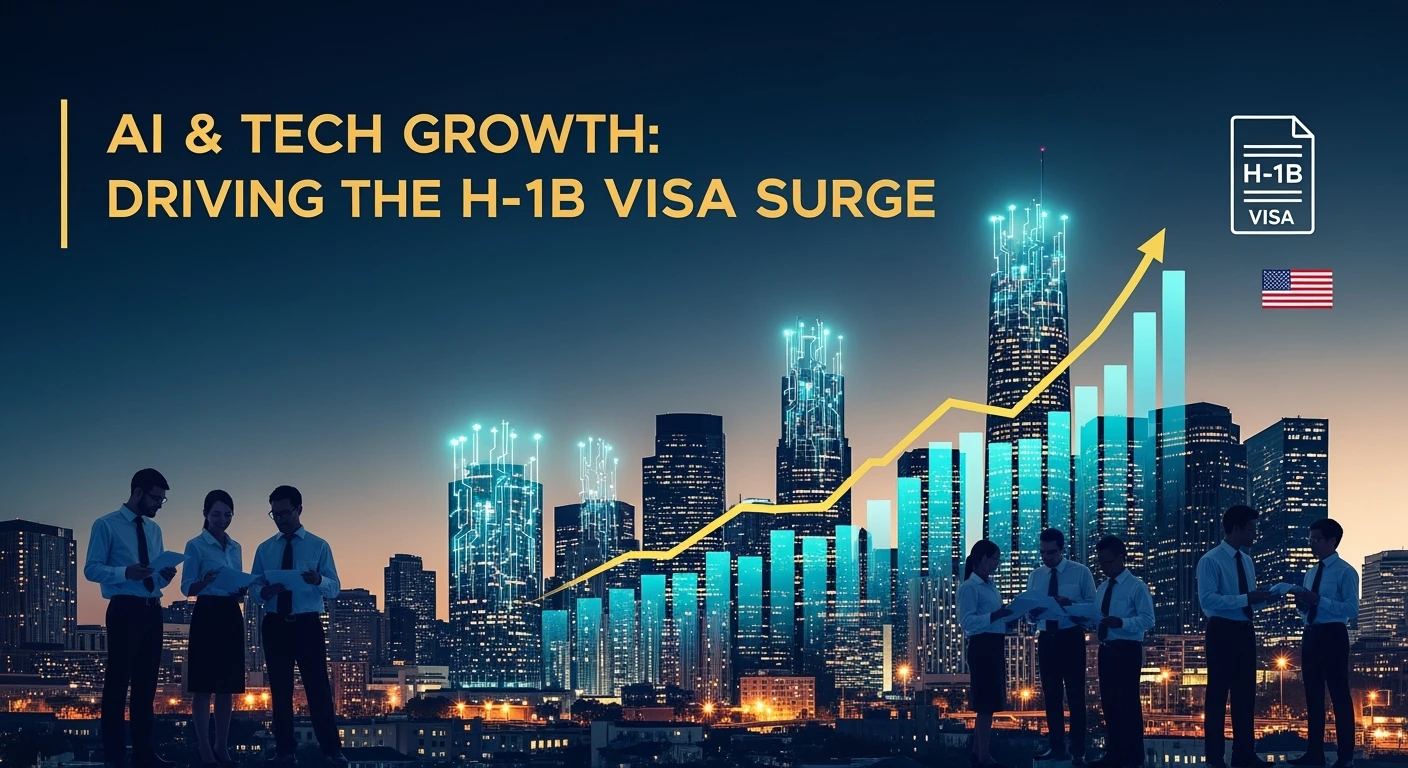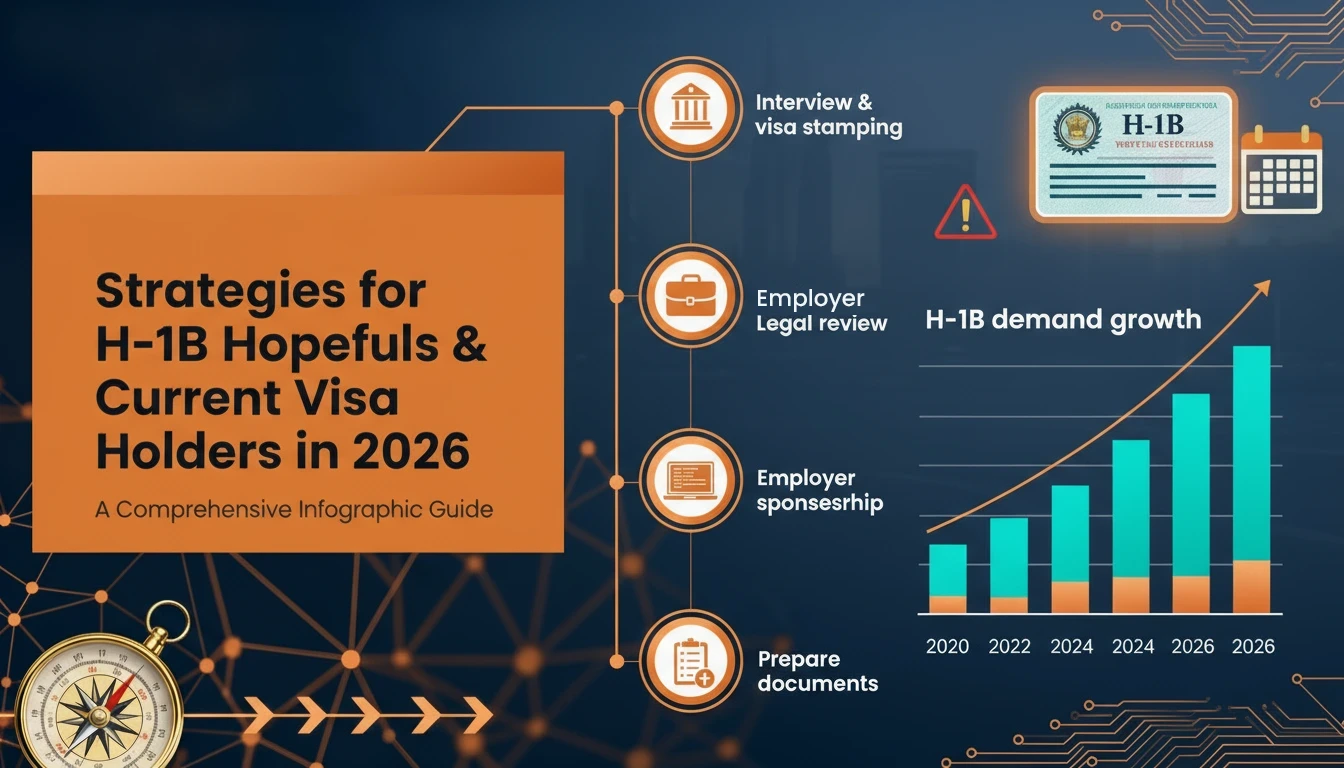
Data Engineering in Banking vs FinTech – Key Differences and Future Trends
How AI is Revolutionizing Exam Monitoring and Assessments in the Digital Era Home Document Data Engineering in Banking vs FinTech Key Differences and Future Trends
The global workforce is experiencing a massive transformation fueled by artificial intelligence (AI), machine learning, cloud computing, robotics, and data science. As these technologies reshape industries, U.S. companies face a growing skills gap. To stay competitive, they are turning to the H-1B visa program to attract global talent.
In 2026, demand for high-skilled foreign professionals has reached new levels. But alongside this tech-driven boom, the post-Trump immigration landscape has brought new rules, opportunities, and uncertainties for H-1B visa holders. This blog explores how AI and tech growth are fueling H-1B demand in 2026 and examines the impact of shifting immigration policies on foreign workers.

AI is no longer just a buzzword — it is transforming healthcare, finance, manufacturing, and retail. U.S. companies are hiring aggressively for roles like AI engineers, machine learning experts, data scientists, and cloud architects. Since domestic talent pipelines cannot fully meet the demand, employers are increasingly relying on H-1B visa sponsorship.
A significant share of graduate students in U.S. tech programs are international. Many of them transition from OPT (Optional Practical Training) to H-1B visas, creating a steady flow of skilled workers. Research shows that immigrants have founded or co-founded some of the leading AI companies in the U.S., highlighting the importance of global talent to American innovation.
Tech giants like Google, Amazon, and Microsoft, along with AI-focused start-ups, continue to file thousands of H-1B petitions every year. Even during periods of layoffs, these firms argue that without global talent, the U.S. risks falling behind in the AI race, especially as countries like Canada and the U.K. are offering attractive immigration options for tech talent.

While the tech industry’s needs are pushing demand higher, immigration policies in the post-Trump era are reshaping the path for H-1B visa holders. Some reforms are easing the process, while others bring fresh challenges.
The H-1B Modernization Rule, effective January 2025, updated the definition of “specialty occupation,” improved oversight, and streamlined the transition from student visas to H-1B status. Another major change under discussion is a wage-based selection system, which gives priority to higher-paid roles. This favors specialized, senior-level positions in tech fields.
Even with relaxed rhetoric compared to the Trump era, uncertainty persists. Visa approval rates, processing delays, and the risk of policy reversals keep both employers and visa holders cautious. Many H-1B professionals hesitate to travel abroad due to concerns about re-entry challenges.
Most H-1B workers eventually seek permanent residency through employer-sponsored green cards. However, long backlogs — particularly for applicants from India and China — remain a bottleneck. Legislative proposals, such as removing per-country caps, could improve the situation, but until then, many workers remain stuck in immigration limbo.


For those pursuing or maintaining an H-1B visa in 2026, preparation and adaptability are key.
Conclusion
The year 2026 is shaping up to be both promising and complex for H-1B visa professionals. On one hand, the booming demand for AI and tech talent is driving unprecedented opportunities for skilled foreign workers. On the other, immigration policy changes in the post-Trump era — from modernization to wage-based selection and persistent green card backlogs — are creating challenges.
For job seekers and professionals, the key is to leverage specialized skills, stay updated on policy changes, and plan strategically for long-term career stability. Those who adapt will not only secure H-1B opportunities but also thrive in the rapidly evolving U.S. tech economy.

How AI is Revolutionizing Exam Monitoring and Assessments in the Digital Era Home Document Data Engineering in Banking vs FinTech Key Differences and Future Trends

How AI is Revolutionizing Exam Monitoring and Assessments in the Digital Era Home The education landscape has undergone a dramatic transformation in recent years, with

How AI & Tech Growth Are Driving H-1B Visa Demand in 2026, and the Impact of Post-Trump Immigration Policies Home The global workforce is experiencing
Give us a call or fill in the form below and we’ll contact you. We endeavor to answer all inquiries within 24 hours on business days.